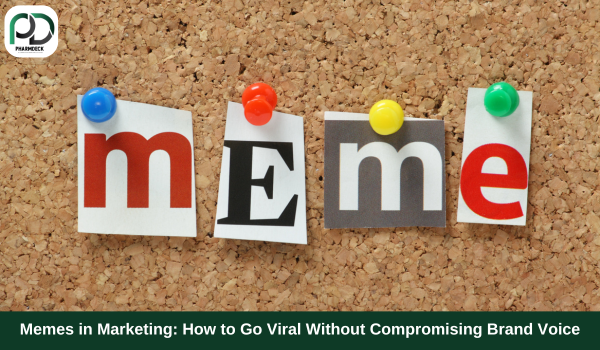
Memes have become a universal language of the internet, offering humor, relatability, and a way to connect with audiences on a personal level. For businesses, leveraging memes in marketing can be a powerful tool to increase engagement, build brand awareness, and even go viral. But how do you integrate memes into your marketing strategy without compromising your brand voice? Let’s explore.
Why Memes Work in Marketing
Memes resonate with audiences because they are:
- Relatable: They often reflect everyday experiences or cultural trends.
- Shareable: Their humor and simplicity encourage people to share them with friends and family.
- Cost-effective: Creating a meme doesn’t require a big budget—just creativity and timing.
Incorporating memes into your marketing strategy allows your brand to stay relevant, engage with younger audiences, and showcase a fun, approachable side.
How to Use Memes Without Compromising Your Brand Voice
While memes can be an effective marketing tool, it’s important to ensure they align with your brand’s identity and values. Here’s how:
1. Know Your Audience
Before jumping on the meme bandwagon, understand your target audience. What type of humor do they enjoy? Which platforms do they use? By answering these questions, you can create memes that truly resonate.
Example:
A tech startup might use memes related to productivity or work-life balance to connect with young professionals, while a fashion brand might focus on memes about style trends.
2. Stay Authentic to Your Brand Voice
Not every meme will suit your brand. Ensure that the tone and style of the meme align with your brand’s personality.
Tips:
- Use humor that matches your brand’s tone—whether it’s quirky, sarcastic, or lighthearted.
- Avoid controversial or offensive memes that could harm your brand’s reputation.
3. Ride the Trend Wave (But Be Timely)
Jumping on trending memes can increase visibility, but timing is key. A meme’s lifespan is often short, so act quickly to stay relevant.
Action Plan:
- Keep an eye on trending hashtags and viral memes.
- Use tools like Google Trends or social media monitoring platforms to stay updated.
4. Add a Branded Twist
To make your meme stand out, put a unique spin on it that reflects your brand. This could involve using your logo, slogan, or a reference to your products.
Example:
A coffee brand could use the classic “Distracted Boyfriend” meme to highlight their new espresso line, with the boyfriend representing “plain coffee” and the girlfriend representing “extra-strong espresso.”
5. Keep It Simple
The best memes are easy to understand at a glance. Avoid overloading your meme with text or complicated visuals.
Pro Tip:
Use free tools like Canva or meme generators to create clean, professional-looking memes.
6. Monitor Engagement
Track the performance of your meme campaigns to understand what works and what doesn’t. Pay attention to likes, shares, comments, and other engagement metrics.
Metrics to Watch:
- Reach: How many people saw your meme?
- Shares: How often was it shared?
- Sentiment: What are people saying in the comments?
Risks to Avoid When Using Memes
While memes can be a fun and effective marketing tool, there are some pitfalls to watch out for:
- Overusing Memes: If your brand relies too heavily on memes, it can lose credibility.
- Forced Humor: Avoid creating memes that feel inauthentic or out of touch.
- Ignoring Copyright: Always ensure you have the rights to use any images or content included in your memes.
- Misinterpreted Messages: Be cautious about cultural differences or sensitivities that could lead to misunderstandings.
Successful Examples of Meme Marketing
1. Netflix
Netflix frequently uses memes to promote their shows in a humorous and relatable way. By tapping into popular formats and adding show-specific humor, they keep their content fresh and engaging.
2. Duolingo
Duolingo’s TikTok presence is a masterclass in meme marketing. Their quirky, self-aware humor aligns perfectly with their brand and appeals to their younger audience.
3. Burger King
Burger King’s viral campaigns often incorporate memes to poke fun at competitors or highlight their own offerings. Their humorous approach helps them stand out in the fast-food industry.
Conclusion: Memes as a Marketing Superpower
Memes are a powerful tool to boost engagement, increase visibility, and connect with your audience on a personal level. By staying authentic, timely, and audience-focused, you can use memes to amplify your brand’s voice without compromising its identity.
Looking to integrate memes into your marketing strategy? At Pharmdeck, we specialize in creative digital marketing solutions that help brands thrive in the digital world. Contact us today to take your meme game to the next level!

Add a Comment